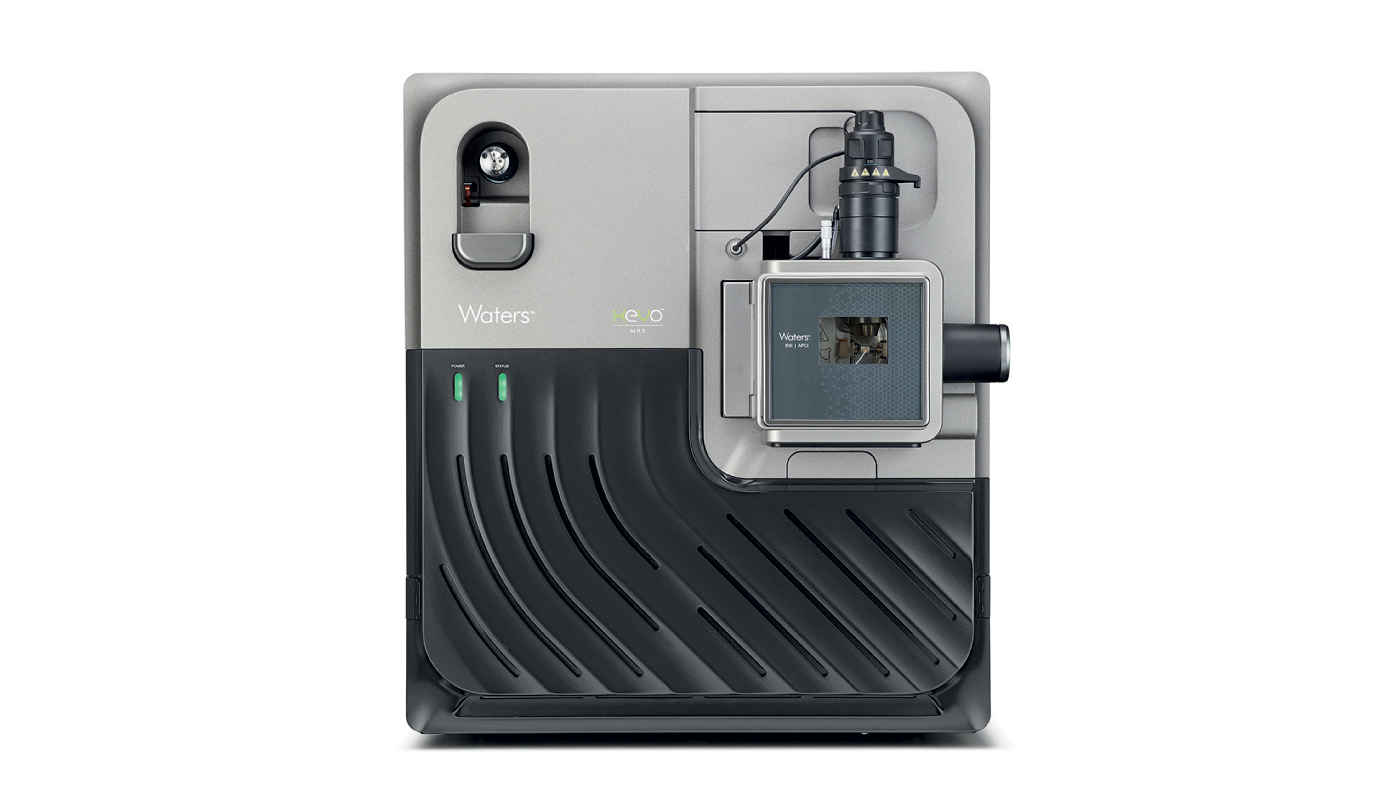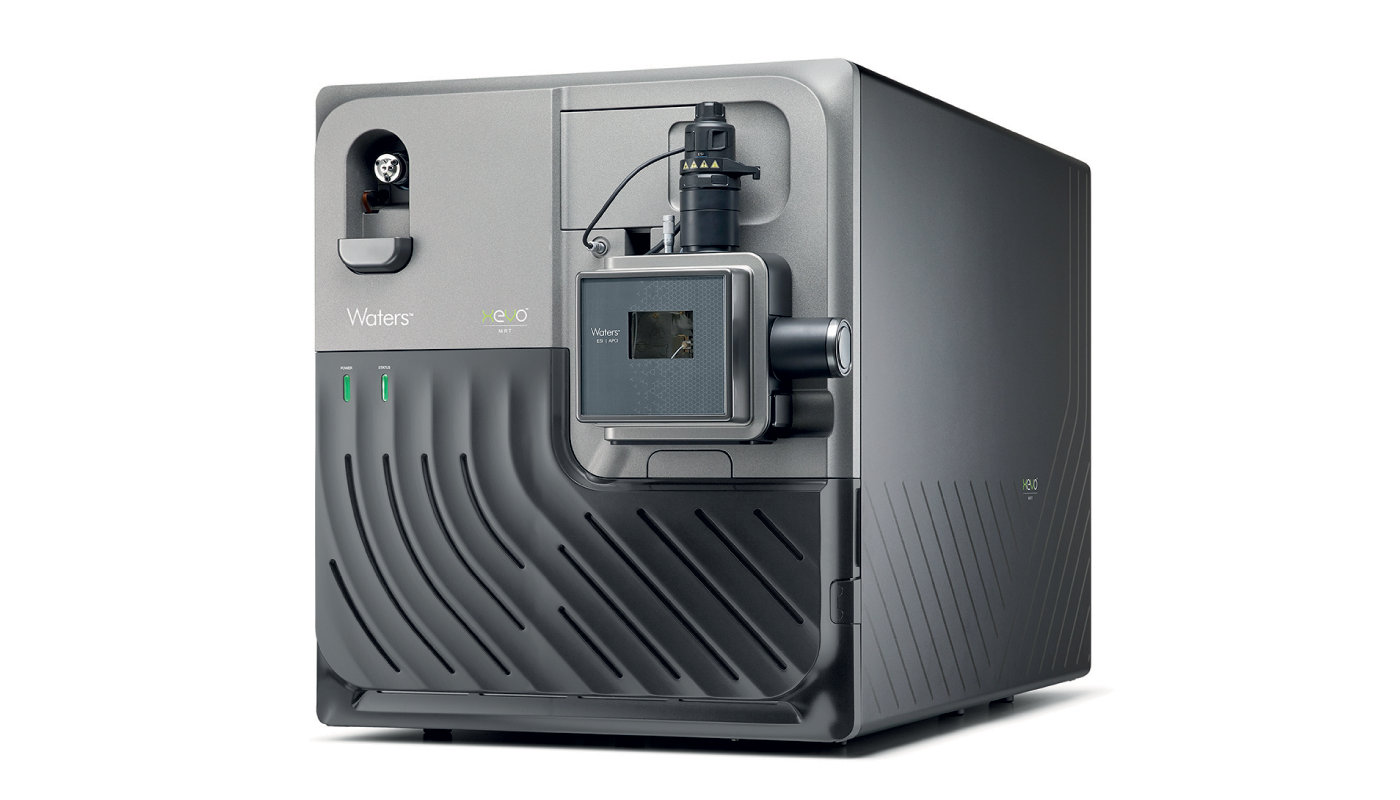There is a growing demand for increased analytical performance and speed – researchers want to analyze more in less time. This is the case across academia and industry and for many applications, but especially for large cohort studies, such as metabolomics or phenotyping experiments, and in epidemiological studies, where running over 1,000 injections a day is increasingly required. Instrument developments pioneered by Waters have enabled the Xevo MRT MS to acquire both full sensitivity and full mass resolution, independent of the acquisition rate, allowing scientists to push the chromatography and achieve exceptional scientific outcomes, without compromising data quality.
We launched the Xevo MRT MS at ASMS in June this year and are incredibly proud of the technology that drives this incredible performance. Let’s take a closer look at what’s under the hood – at the game-changing technology developed by our R&D team.

Engineering-out compromise
The Xevo MRT MS incorporates the front end of our leading tandem quadrupole mass spectrometer, the Xevo TQ Absolute, comprising the universal source, StepWave XS ion guide, and quadrupole mass analyzer. The newly designed electronics platform achieves tandem quadrupole-like levels of MS/MS switching speed, combined with high-sensitivity and precise precursor isolation resolution.
The piece our engineering team is most proud of is the new collision cell and transfer optics. These key pieces of technology allow us to efficiently capture and transmit ions across the full m/z range with high-sensitivity. The collision cell design compresses the ion beam and allows high transmission through downstream apertures, maximizing sensitivity over a wide m/z range. Importantly, this design also limits transit time through the collision cell, allowing the instrument to maintain the precursor ion fidelity from the fast-switching quadrupole mentioned earlier. The ions are then efficiently transferred from the collision cell to the mass analyzer, simultaneously ensuring maximum resolution and sensitivity. What does this mean for our users? It removes the need for compromise and simplifies system set up.
The team have designed a multi reflecting time-of-flight mass analyzer that works in unison with the transfer optics, and delivers 100,000 FWHM mass resolution. The analyzer’s highly folded gridless ToF geometry with a 4-meter flight path has an impressively compact size of 0.65 m x 0.4 m. This gridless design ensures maximum transmission of the ion beam, and in combination with the high duty cycles of our traditional time-of-flight instruments, ensures we are able to deliver high resolution at high sensitivity, removing the compromise traditionally associated with time-of-flight technology. And with many labs limited by space, it delivers impressive specifications in a compact footprint.
Finally, we need to detect the ions, and this is where the acquisition system comes in. The detector’s most attractive feature is its gain stability, which enables repeatable single ion responses over long time frames leading to excellent quantitative reproducibility. The dual gain analogue-to-digital converter (ADC) enables a dynamic range of up to six orders of magnitude per-second, critical for quantitation experiments and the analysis of challenging, complex matrices.
This is tied together with updated informatics, delivering a total system workflow for ultimate productivity, and importantly, data flexibility – we’ll touch on this later!
To summarize, the system provides up to 100,000 resolution at a lightning-fast 100 Hz acquisition rate with mass accuracy <500 ppb RMS, at 10x the sensitivity of the Xevo G3 QTof, generating exceptional data quality for research and routine applications.
The Xevo MRT MS in practice
The Xevo MRT MS is ideally suited to large cohort lipidomics, metabolomics, and metabolite identification studies, where there’s a clear demand to go faster without having to compromise on data quality.
However, the instrument has been designed to solve the most challenging problems our users encounter, and as we move forward, we’re working on application areas that include biopharmaceutical analysis, such as monoclonal antibodies and oligonucleotides, as well as impurity analysis, and PFAS.
Professor Perdita Barran, Director of the Michael Barber Centre and Professor of Mass Spectrometry at the University of Manchester, gave an eye-opening presentation at the launch (watch the event here) about how she has been using the Xevo MRT MS in her groundbreaking work on Parkinson’s disease. In brief, Prof. Barran is developing a mass spectrometry-based test by analyzing sebum swabbed from a person’s neck and back. She has recently used the Xevo MRT MS to find clinically relevant features in a cohort of samples. During her presentation at ASMS2024, she said, “What we’ve done with the Xevo MRT – and this is coincidental because this is how we were thinking too – is to shorten the runtime and see how much information we can get [...] Even with the shorter runtimes, we’re still getting an enormous number of features.”
Prof. Barran and her team combined the Xevo MRT MS analysis with LC IMS-MS using the SELECT SERIES Cyclic IMS MS to compare the number of features, build a predictive model, and translate markers for multiple reaction monitoring (MRM). Her aim is to stratify the disease in terms of how it progresses and to use biomarkers to inform clinicians and improve outcomes for patients – particularly at the early stages, but also throughout disease progression.
“Being able to translate to an MRM method for clinical biochemistry labs – because that’s what they use: triple quads – is greatly facilitated by high resolution and fast instrumentation,” said Prof. Barran. “And, in our hands, it has been really facilitated by access to the Xevo MRT.”

Performance-driven flexibility
We are aware that many of our users and research collaborators know their experiments like the back of their hand, which can make it feel daunting to change instruments – or vendors – and particularly so when it comes to data processing and applications software.
The Xevo MRT MS is coupled to waters_connect software platform, and to deliver on the goals we set on data processing flexibility, our talented software team have developed an application called DATA Convert. This application can generate mzML files both at the point of data acquisition and post-acquisition, enabling simplified connection to popular open-source software such as MS-DIAL, MZMine, XCMS and Skyline. There has been a lot of recent interest in data flexibility and data formats, and ensuring data generated by the Xevo MRT MS is readily accessible in a generic data format was a key requirement for the project.
Leading up to the launch of Xevo MRT MS we announced our partnership with the fantastic team at Mass Analytica, which have commercially available, vendor agnostic, software for lipidomics (Lipostar), metabolomics (MARS), and metabolite identification. Together, we have developed and implemented a new application programming interface (API) that enables us to integrate seamlessly to their software, providing users with best in-class computational solutions for MS data analysis acquired on the game-changing Xevo MRT MS.
These groundbreaking instrument and software developments have truly delivered on the promise of performance and speed without compromise. We’ve been bowled over by Prof. Barran’s work with the Xevo MRT MS, and we’re very excited to see what other researchers will achieve with this analytical powerhouse.
Join us on a new path to a new future, one without compromise.





